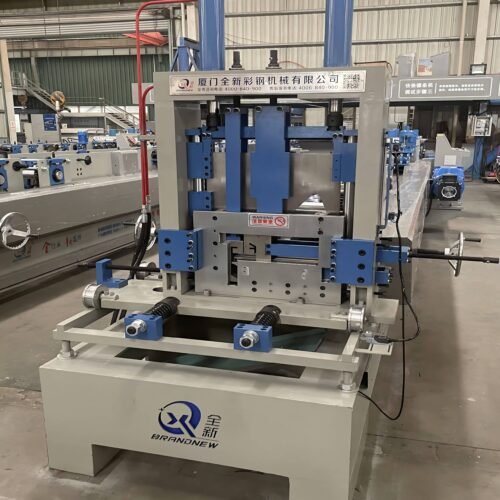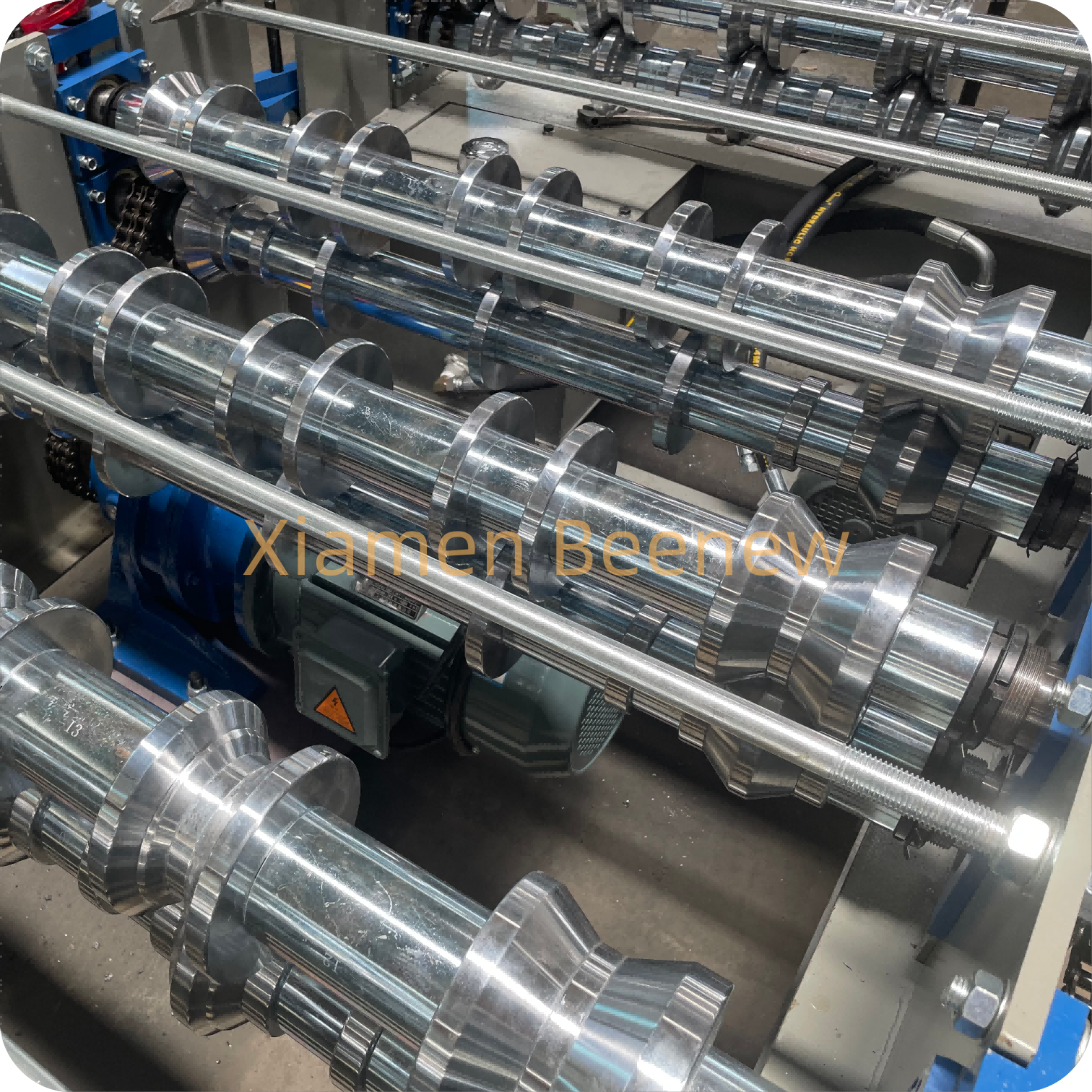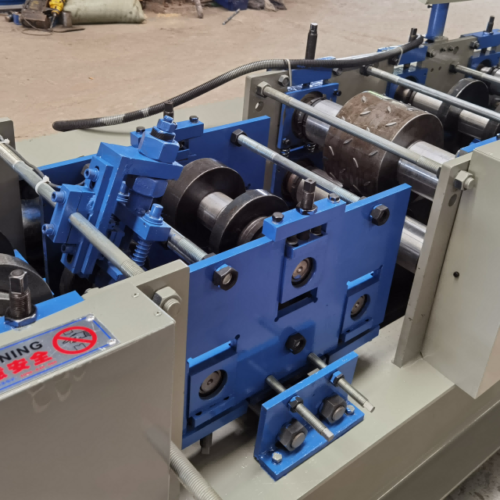Product Name: Iron Sheet Making Machine
Machine Parameters
| Item | Value |
| Driving Motor | 15KW*2 |
| Forming Station | 20 |
| Roller Material | GCr15 |
| Shaft Diameter | 75/95mm |
| Shaft Material | 45# steel |
| Pump Motor | 7.5KW |
| Frame Type | Common weld wall |
| Cutting Type | Hydraulic Cutting |
| Control System | PLC |
| Main Electric Parts Brand | Simenz, Delta, Omron or Schneider |
| Cutting Length Precision | ±2mm |
| Machine Dimension | 10500*1150*1450mm |
| Electric Standard | 380V/50HZ/3Ph or customized |
| Paint Color | Grey White+bule or customized |
Iron Sheet Making Machine is a specialized piece of equipment used in the construction industry to produce metal roofing panels. These machines automate the process of shaping metal coils into specific profiles used in roofing, ensuring consistency, efficiency, and high production speed. Here’s an overview of its key aspects:
Components of a Roofing Roll Forming Machine
- Decoiler: Holds and unwinds the metal coil, feeding it into the machine.
- Feeding Guide: Directs the metal strip into the roll forming section.
- Roll Forming System: Consists of a series of rollers that progressively shape the metal into the desired profile.
- Cutting System: Cuts the formed metal into specified lengths, often using a flying cut-off system to maintain continuous operation.
- Control System: A programmable logic controller (PLC) system that automates the machine’s operations, ensuring precision and synchronization.
- Output Table: Collects and stacks the finished roofing panels.
Types of Roofing Profiles
Roll forming machines can produce various roofing profiles, such as:
- Standing Seam: Known for its durability and weather resistance.
- Corrugated: Characterized by its wavy pattern, offering strength and versatility.
- Tile Effect: Mimics the appearance of traditional roofing tiles while providing the benefits of metal roofing.
Advantages
- Efficiency: High-speed production with minimal manual intervention.
- Consistency: Produces uniform panels with precise dimensions.
- Customization: Can be adjusted to create different profiles and lengths.
- Material Utilization: Minimizes waste by optimizing material usage.
Applications
- Residential roofing
- Commercial and industrial buildings
- Agricultural structures
- Custom architectural designs
Maintenance and Operation
- Regular Inspection: Ensuring all components are in good working condition.
- Lubrication: Keeping moving parts well-lubricated to reduce wear and tear.
- Alignment Checks: Ensuring the rollers and cutting system are properly aligned for accurate production.
- Operator Training: Proper training for operators to handle the machine safely and efficiently.
Recent Trends
- Automation: Increased use of advanced PLCs and software for better control and efficiency.
- Material Innovation: Use of coated steels and alloys to enhance durability and aesthetic appeal.
- Energy Efficiency: Development of machines that consume less power and offer eco-friendly production processes.
Investing in a roofing roll forming machine can significantly enhance production capabilities for roofing manufacturers, offering a competitive edge through improved productivity and quality.












Reviews
There are no reviews yet.